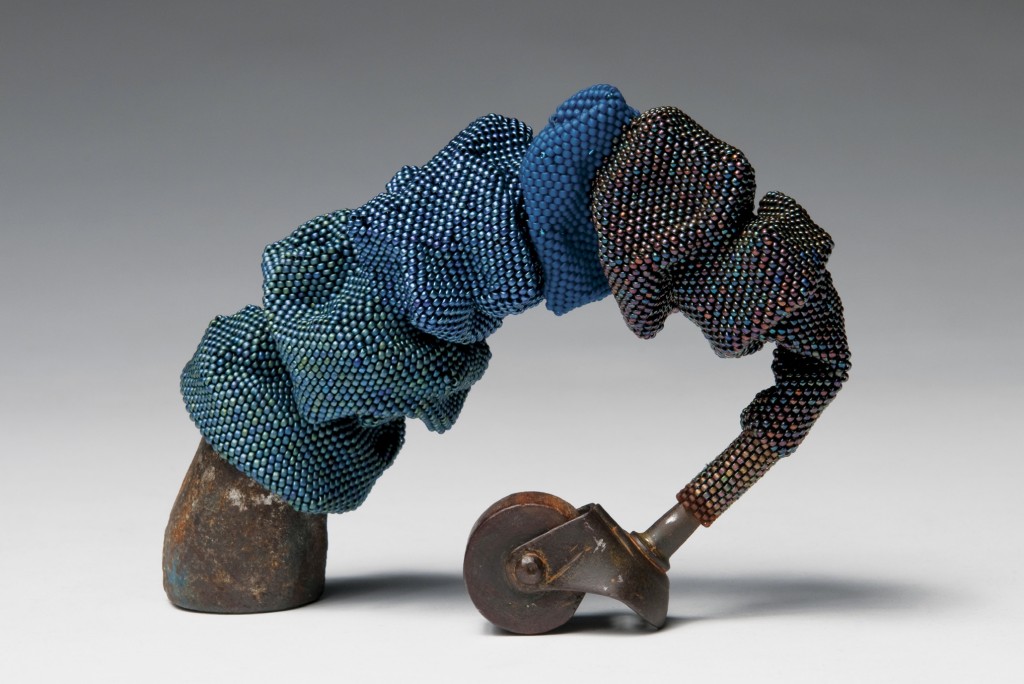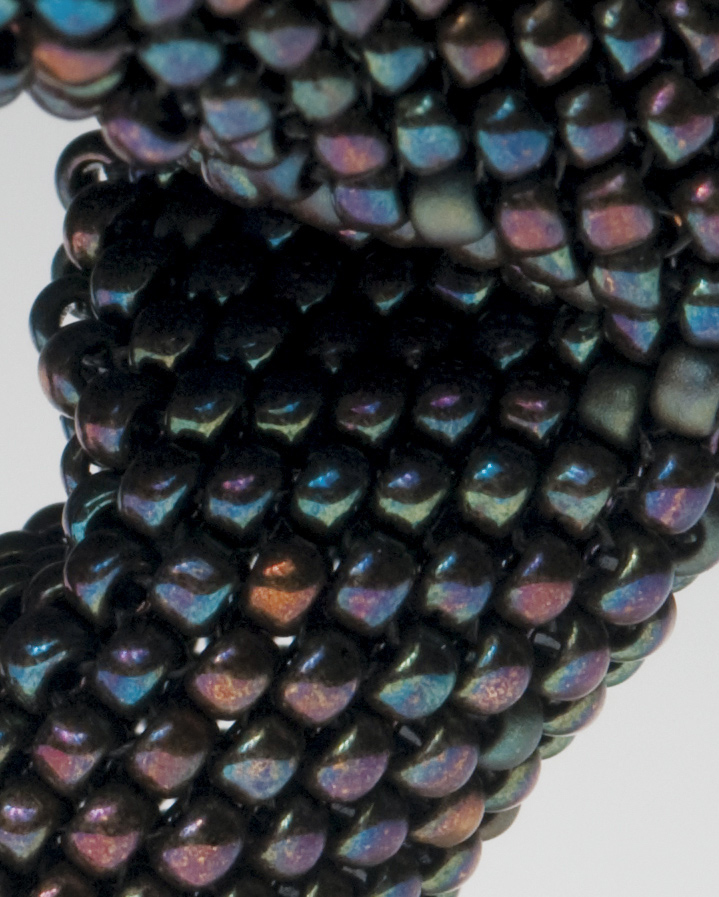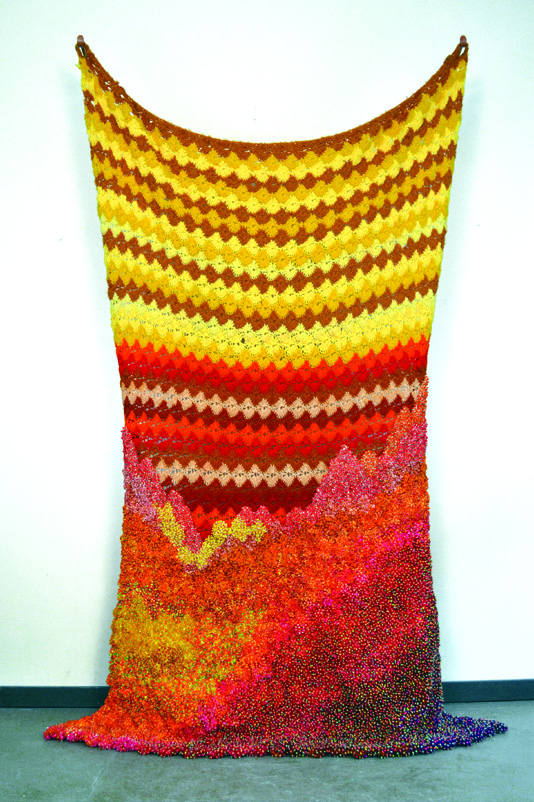Welcome to the last entry in our August, 2015 blog series celebrating the final days to enter your artwork for consideration into FI2016! We’re highlighting different artist’s interpretations of fiber art that we’ve loved seeing in past Internationals.
According to textile scholar Elizabeth Wayland Barber (Women’s Work: The First 20,000 Years), some of the very oldest evidences of fiber we know about are the strings and sinews that were used to link pieces of bone and stone together: the very first beads.
Textile artists have come a long way from stringing shells together. We’ve developed embroidering, weaving, looming, stitching: all ways of bringing thousands of glittering separate pieces together to create a work of art. Flat or sculptural, as an ornament for fabric or as a dense, shimmering fabric of its own, beadwork is a significant part of the fiberart tradition.

In her “Urban Artifacts” series, Annette Tacconelli uses beadwork to transform found metal bits into sculptures that feel surprisingly alive, complete, and whole. About “Urban Artifacts,” Annette says:
My urban artifacts are one of my most beloved and philosophically truthful bodies of work. I begin by harvesting discarded rusty bits of a forlorn modern world. I wash the metal. I shut my eyes and see the metal’s next incarnation. Most pieces are made from over 10,000 beads, built one bead at a time. Using only the bead, thread and tension I create the ruffled volume or flat expanse. It takes approximately six months per creation. Here the mundane, the soulful and the imperfect become prayers.
You can draw a visual comparison between Annette’s beadwork and the shimmery scales of a snake, or the pattern of bumps on a lizard’s back. Here’s some more of her work from FI2010: an almost anthropomorphic form you feel might flip over or crawl away at any moment:


Taking the anthropomorphic one step further is Christy Puetz’ 2005 piece, Magdalena.

Christy’s beadwork also shimmers seductively – making for a piece that you’re torn between wanting to reach out and touch… or back away from.
Beadwork can also be synonymous with decorative excess, and my favorite example of this over-the-top ornamentation is FI2013’s sumptuous She Speaks Folly in a Thousand Holy Ways by Samantha Fields.

Beadwork has a seductively tactile quality to it, and when picked up, is often much heavier than you expect it to be. Samantha plays on this idea by deliberately letting the piece sag and puddle on the floor – as the viewer, you’re compelled to both straighten it up and, at the same time, run your fingers through the glossy, messy excess.
Close up, the resemblance of the beads to some kind of sugary, cancerous growth is emphasized.

Samantha says:
I create hybrids of form, social constructs, and disparate categories. I see these hybrids with their excess of ornament as an elevation of what has been traditionally considered devolution of a sophisticated western society. I am interested in a visual language that has been associated with the feminine, the infantile, the primitive or relegated to be superficial, excess, and considered unworthy of serious consideration.
Whether your beadwork is flat or sculptural, organic or precise – We’re exited to see what new forms you’ve been creating with beads.
